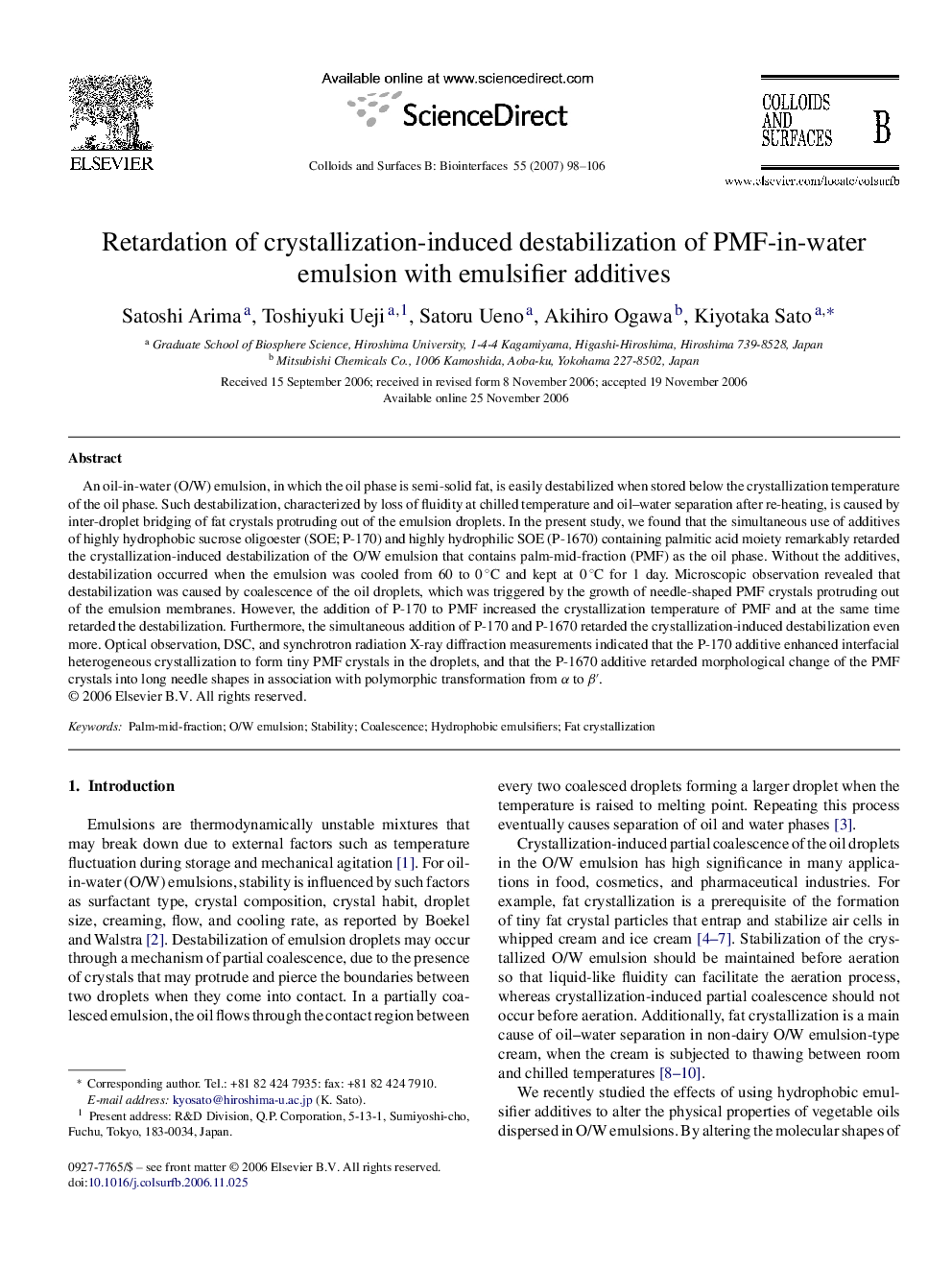| Article ID | Journal | Published Year | Pages | File Type |
|---|---|---|---|---|
| 602801 | Colloids and Surfaces B: Biointerfaces | 2007 | 9 Pages |
An oil-in-water (O/W) emulsion, in which the oil phase is semi-solid fat, is easily destabilized when stored below the crystallization temperature of the oil phase. Such destabilization, characterized by loss of fluidity at chilled temperature and oil–water separation after re-heating, is caused by inter-droplet bridging of fat crystals protruding out of the emulsion droplets. In the present study, we found that the simultaneous use of additives of highly hydrophobic sucrose oligoester (SOE; P-170) and highly hydrophilic SOE (P-1670) containing palmitic acid moiety remarkably retarded the crystallization-induced destabilization of the O/W emulsion that contains palm-mid-fraction (PMF) as the oil phase. Without the additives, destabilization occurred when the emulsion was cooled from 60 to 0 °C and kept at 0 °C for 1 day. Microscopic observation revealed that destabilization was caused by coalescence of the oil droplets, which was triggered by the growth of needle-shaped PMF crystals protruding out of the emulsion membranes. However, the addition of P-170 to PMF increased the crystallization temperature of PMF and at the same time retarded the destabilization. Furthermore, the simultaneous addition of P-170 and P-1670 retarded the crystallization-induced destabilization even more. Optical observation, DSC, and synchrotron radiation X-ray diffraction measurements indicated that the P-170 additive enhanced interfacial heterogeneous crystallization to form tiny PMF crystals in the droplets, and that the P-1670 additive retarded morphological change of the PMF crystals into long needle shapes in association with polymorphic transformation from α to β′.
